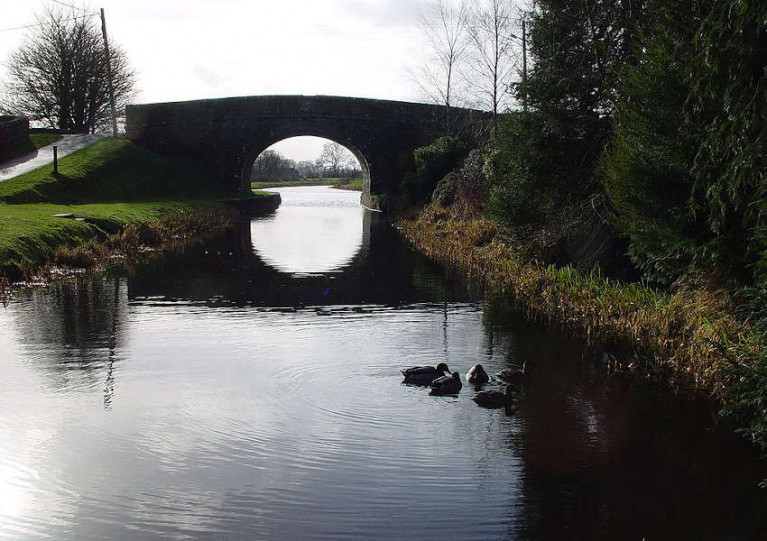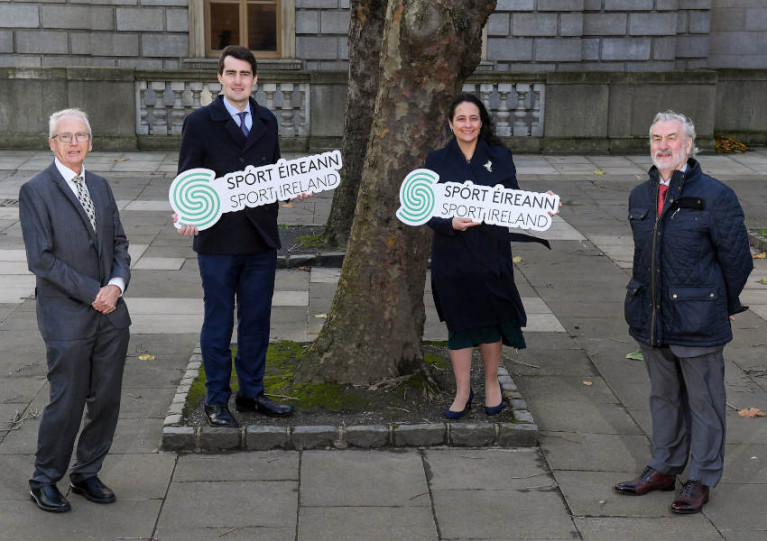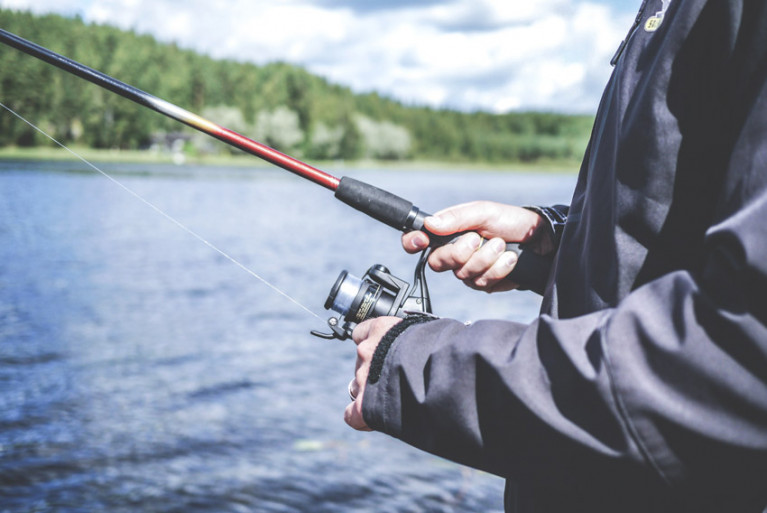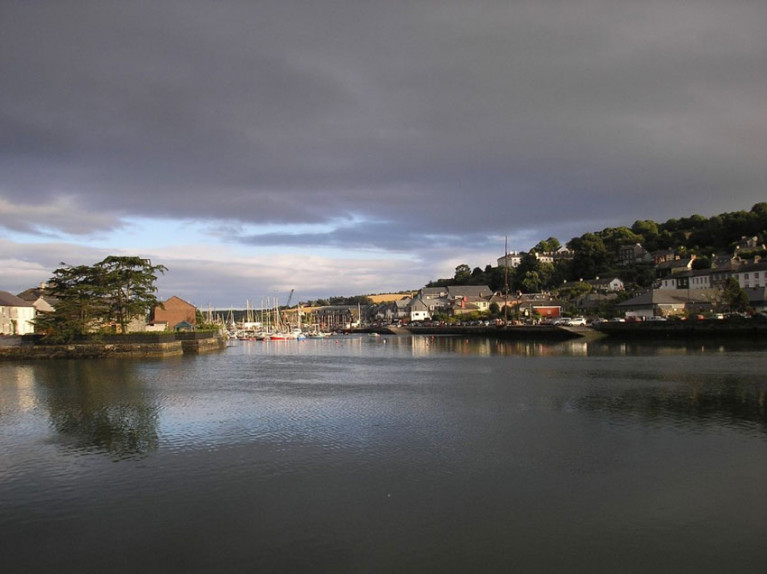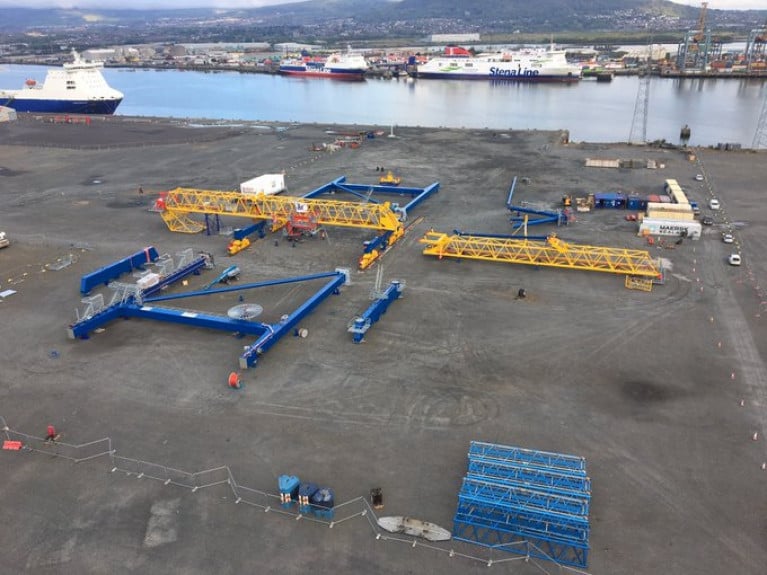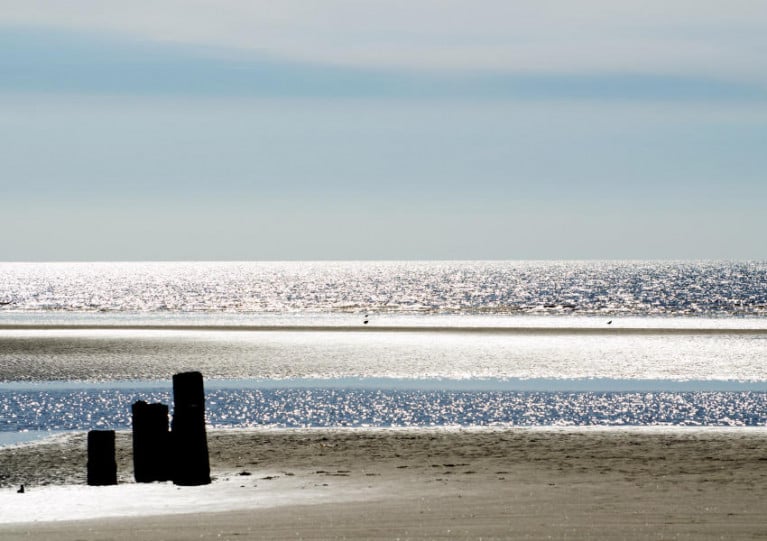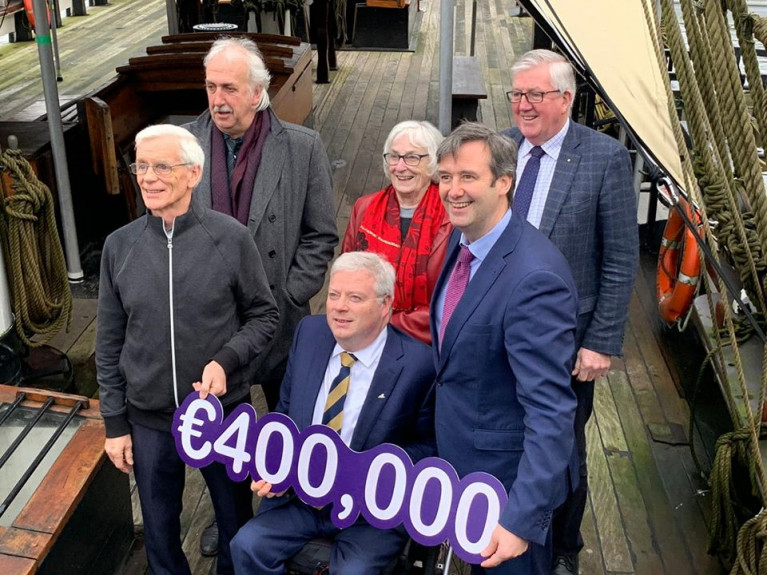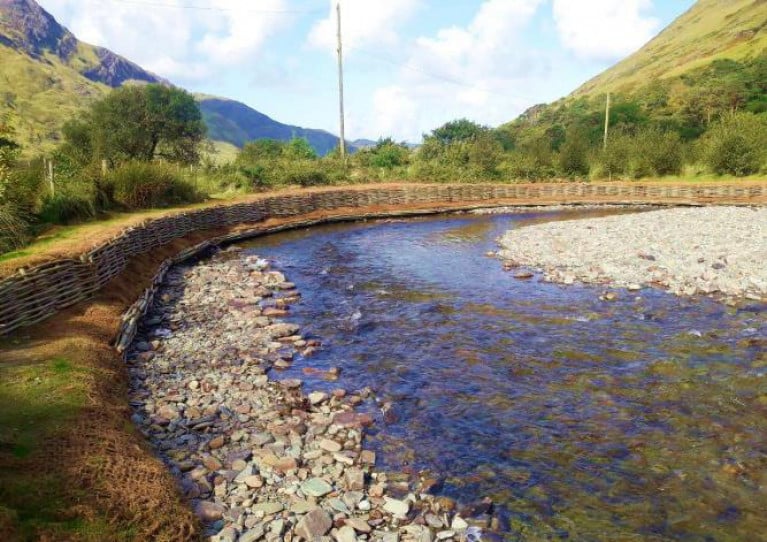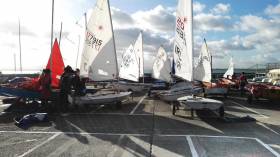Displaying items by tag: Funding
New Infrastructure for Waterways in €63M Greenways Funding Allocation
Refurbishment of the Longford Canal and the extension of the Grand Canal Greenway from Daingean to Edenderry are two of the projects that will be funded from a €63.5m allocation for greenways in 2021.
Transport Minister Eamon Ryan and Minister of State Hildegarde Naughton today (Monday 9 November) confirmed the funding for a range of greenways across the country.
Minister Ryan said the funding “is the highest single year amount ever allocated to greenways”.
“Indeed, it nearly equals the total amount originally allocated for the four years 2018-2021 (€53m) and shows the commitment of this Government to providing a step-change in the way in which we fund walking and cycling,” he said.
Among the inland waterways projects in the list is the €172,000 refurbishment of the Longford Canal spur of the Royal Canal, with improved infrastructure being provided along its cycleway.
In Co Offaly, €3.1 million has been allocated to fund the extension of the Grand Canal Greenway from Daingean to Edenderry, with another €1.66 million for the stretch between Daingean and Lough Boora, west of Tullamore.
“By the end of next year it will be possible to cycle the greenway the whole way from Edenderry to Lough Boora, over 50km worth of cycleway,” Minister Ryan said.
Minister Naughton added that a new greenway bridge across the River Shannon in Athlone would be funded from a €8.1 million allocation to the Galway-to-Dublin Greenway.
Sailing & Aquatic Sports Share in ‘Unprecedented’ €85m Funding Package to Address Covid-19 Challenges
Sailing in Ireland is set to benefit from an “unprecedented” €85 million funding package for the sports sector.
Sport Ireland chairman Kieran Mulvey said the announcement — made today (Monday 2 November) by Sport Minister Catherine Martin and Minute of State for Sport Jack Chambers — represents “the largest ever investment package for sport”.
It follows a €70 million package approved over the summer as the Government aims to address some of the extended challenges of the coronavirus pandemic.
John Treacy, chief executive of Sport Ireland, said: “The initial schemes announced in June were designed to support organisations with Covid-19-related losses in 2020.
“However, having engaged with our funded bodies, we understand that the current Level 5 restrictions present additional challenges.
“As such, we are ring-fencing finances to address any immediate needs that may arise in the sector in the coming weeks.”
Among the allocations to national governing bodies, Irish Sailing will receive €650,000, while Rowing Ireland gets €149,000, €70,000 goes to the Irish Underwater Council, €50,000 to the Irish Surfing Association and €48,000 to Canoeing Ireland.
The Olympic Federation of Ireland has welcomed the funding “which will provide much needed support for a wide variety of Olympic sports, many of which have been severely impacted by Covid-19”.
It adds that the package will also “provide some stability to protect performance programmes for those elite athletes currently preparing for the Olympic and Paralympic Games in Tokyo next year”.
€120K ‘Angling For All’ Fund To Support Youth & Novice Anglers
A new funding scheme to support novice anglers of all ages and backgrounds is now open for applications.
Inland Fisheries Ireland (IFI) says the €120,000 ‘Angling for All’ fund will contribute between €2,000 and €5,000 for each qualifying project aimed at getting young and novice anglers involved in the sport and pastime.
Applications are invited from all angling clubs within the Republic of Ireland as well as angling representative bodies, local community groups and not-for-profits, and both existing and planned Angling For Youth Development Ireland (AFYDI) hubs.
“Angling is not just a sport; it can offer young people new experiences and opportunities,” says IFI’s Suzanne Campion. “It can also help develop a young person’s skills, self-confidence and motivation whilst promoting physical exercise and good health.”
The closing date is Tuesday 13 October and all applications must be submitted via the IFI website.
As previously reported on Afloat.ie, IFI is also currently inviting submissions for its new Novice Angling Strategy, titled ‘Let’s Fish’, which is aimed at growing angling participation nationwide.
Marine Michael Creed has today (Tuesday 19 May) announced details of a €3.1m package to assist 10 coastal local authorities in 58 development and repair projects on harbours and slipways owned by them.
The package provides funding for maintenance and repair works in addition to supporting the ongoing development and enhancement of harbour facilities including some marine leisure developments.
Minister Creed said: “I am delighted to announce the continuation of our programme to assist coastal local authorities in the repair and development of fishery and aquaculture-linked marine infrastructures under their ownership.”
The local authority programme forms part of the Department of Agriculture, Food and the Marine’s 2020 Fishery Harbour and Coastal Infrastructure Development Programme, whereby the department co-funds up to 75% of the total cost of approved projects, with the Local Authority providing the balance.
The minister said the harbours in receipt of this funding “are fundamental to the wellbeing of rural coastal communities and play an important social and economic role in their respective localities”.
He added: “The €3.1m I have made available in 2020 is testament to my commitment to assist in the ongoing economic and social development in our rural coastal communities. This enlarged scheme will provide a much needed economic boost to these communities, given the impact the Covid-19 pandemic has had on rural areas.
“The diverse range of projects approved for funding under the programme are geographically spread across 10 local authorities and will not only create local construction employment over the lifetime of the projects, but equally will further enhance the amenities provided to the wider marine community in these coastal areas.”
Department of Agriculture, Food and the Marine funded Local Authority works 2020
|
County Council |
Location |
Works |
Grant Aid Approved € |
|
Clare County Council |
Carrigaholt Pier |
Essential repairs and reconstruction of section of old pier wall. |
37,500 |
|
Bournapeaka Pier (Ballyvaughan) |
Underpin mid section of pier. Remove and replace cracked section of pier. Remove section of deck and replace tying into repaired section of quay. Remove and relay cut stone along pier edge. |
51,750 |
|
|
Ballyvaughan Pier |
Installation of flood gate and 3 no. flap valves. Provision of rock armour to protect pier wall. |
48,750 |
|
|
Total Clare |
138,000 |
||
|
Cork County Council
|
Ballycotton Pier |
Provide additional berthage at the deepest section of the pier. Fit 1 No. new navigation light at harbour entrance. Install new fenders at head of main pier. |
22,500 |
|
Kinsale Harbour – Pier at Fisherman’s Pontoon |
Re-grade and re-deck existing access to the fisherman's pontoon. Replace and install new gangway. Provide safety signage and necessary safety railings. |
93,750 |
|
|
Youghal Harbour - Nealson Quay, Market Dock & Green Dock |
Installation of new handrails, toe-rails, replace ladders, mooring rings, mooring bollards and storm weather gate. Upgrade existing steps and carry out remedial works to pier wall and re-deck slipway. |
60,000 |
|
|
Keelbeg – Union Hall Pier – Safety Measures |
Provide physical barrier to control access to pier. Line markings are required to designated works areas, walking area and storage areas. Provide CCTV system. Install toe rails along the edge of pier. |
30,000 |
|
|
Utility Upgrade (water) at Keelbeg (Union Hall Pier), Kinsale Harbour, Baltimore Pier, Ballycotton Pier |
Upgrade of water distribution system to include supply points on the side of the pier to improve facilities for users/fishermen. |
38,250 |
|
|
Safety Measures & Improvement Works Bundle - Ilawn na gCoarach (Bere Island), Bea Lough Pier, Abbey Pier (Sherkin Island), East Pier (Heir Island),Middle Land (Long Island). Colla Pier & Abbey Pier (Sherkin Island) |
Erect standard safety signage at Ilawn na gCoarach, Bea Lough Pier, Abbey Pier, East Pier & Middle Land. Replace damaged ladders, handrails, toerails, minor concrete repairs at Bea Lough Pier, Colla Pier & Abbey Pier. |
26,250 |
|
|
Utility Upgrade Bundle (Water & Electricity) Schull Pier, Courtmacsherry & Middle Land (Long Island) |
Schull - Upgrade of existing electric system and provide distribution system to include supply points on the pier. Courtmacsherry - Upgrade of existing water & electric system and provide distribution system to include supply points on the pier. Middle Land (Long Island) - Upgrade of existing water & electric system and provide distribution system to include supply points on the pier. |
32,250 |
|
|
Monkstown Sand Quay |
Provide concrete plinth adjacent to slipway. Install handrail. Provide vertical toe rail on both slips. Define access with Safety Chains/Bollards. Install new Ring Buoy. Install standardised H&S Signage. |
7,500 |
|
|
Castletownsend |
Install handrail to steps and toe-rail. Concrete repair to steps and defective areas of pier deck. Safety signage. Provide road lining at entrance to pier. Provide ring-buoy. |
5,250 |
|
|
Drumlave (Adrigole) |
Replace defective ladder and provide new additional ladder, toe rail, handrail and mooring rings. Concrete remedial work to steps. Safety signage. |
5,250 |
|
|
|
Knockadoon Pier & Slip |
New concrete deck on upper section of slipway. Provide section of vertical toe-rails on both sides of slipway. Provide a new section of handrail on raised concrete section at beach & breakwater. Replace 2 No. ladders at head of breakwater. New surface water drain with gulley adjacent to gabions. Safety signage. |
13,500 |
|
Lough Hyne East |
Erect handrail at steps. Concrete repair works to quay wall including deck repair at corner. Safety signage. |
7,500 |
|
|
Warren’s Boathouse Pier |
Upgrade steps and install handrails. New concrete deck to pier and slipway. Upgrade and replace timber ladders. Provide mooring rings, bollards and toe-rails. Safety signage. |
52,500 |
|
|
Total Cork |
394,500 |
||
|
Donegal County Council |
Leenan Slipway |
Construction of a new 8m wide slipway for taking up boats for safe storage in bad weather. |
150,000 |
|
Greencastle Pier |
Pile Repairs - Engage a diving contractor to reinforce the existing piles by welding steel plates of similar profile to them. |
90,000 |
|
|
Malinbeg Slipway Winch |
Replace the existing electric winch with an electro-hydraulic winch. |
22,500 |
|
|
Ballyederlan Pier |
Provide lighting, slipway decking, signage and safety railings. |
18,000 |
|
|
Carrickarory |
Provide vertical D fenders at the head of the pier as well as repair/replace ladders, repair the electrical installation (power outlet) and provide signage. Repair and rebuild the existing pier wall. |
45,000 |
|
|
Port Inver (Aid to Navigation) |
Provide a Port Hand buoy and navigation light as well as safety signage at the pier. |
12,000 |
|
|
Nead na Gé |
Re-deck the slipway, provide signage and provide public lighting. |
22,500 |
|
|
Entrance to Kincasslagh (Aid to Navigation) |
Provide a new Starboard beacon and navigation light as well as safety signage. Replace corroded ladders on Turk Rock, Leac na bhFear and Aileen Reef. |
24,000 |
|
|
Cruit Lower |
Repair the slipway, replace existing ladders, provide hand railing, signage and improve general safety. |
22,500 |
|
|
Donegal Town (Aids to Navigation) |
Replace 8 No. buoys with new lights to improve safety of navigation to the town pier. |
18,000 |
|
|
Mullinasole |
Provide new hybrid lighting at the head of the pier. |
9,000 |
|
|
Total Donegal |
433,500 |
||
|
Fingal County Council |
Balbriggan Harbour |
Provision of services supply points (water and electricity) on Northern side of the harbour and associated connections. |
67,500 |
|
Loughshinny Harbour |
Reconditioning and re-strengthening of pavement and sea wall. |
67,500 |
|
|
Loughshinny Harbour |
Replacement and installation of new ladders, guardrails and associated ancillary works to the South Pier. |
15,000 |
|
|
Rush Harbour |
Lift and relay and re-secure a section of original stones to the slipway serving the northern section of Rush Harbour. |
7,500 |
|
|
Total Fingal |
157,500 |
||
|
Kerry County Council |
Tarbert Pier |
Further strengthening and underpinning to quay wall together with alignment of stone to face of wall. Precast panel placement and grouting of voids. |
150,000 |
|
Glen Pier, Ballinskelligs |
Structural repairs to pier - replace steps and filling of voids. |
45,000 |
|
|
Ventry Pier |
Construct concrete steps. |
56,250 |
|
|
Total Kerry |
251,250 |
||
|
Mayo County Council |
Roonagh |
Provision of new crane. Safety improvement works. |
150,000 |
|
Killala |
Construction of equipped hardstand area to facilitate boat repairs/ storage/ waste management. Maintenance cleaning of silt from berthage /docking area. Safety works to steps, railings etc. |
150,000 |
|
|
Blacksod |
Provision of new crane. Safety improvement works at Blacksod Pier. |
112,500 |
|
|
Ballina Harbour |
Further repairs to harbour deck and provision of safe access to harbour area. Improve, upgrade and replace Aids to Navigation on River Moy approach channel. |
112,500 |
|
|
Total Mayo |
525,000 |
||
|
Sligo County Council |
Easkey Pier |
Major repairs to structure including repairs to deck at head of pier; repairs to spalling at rear of pier; repair spalling and scouring to pier adjacent to slipway; and spalling to top of pier wall. |
84,000 |
|
Aughris Pier |
Major repairs to structure including head of pier due to scouring and spalling; and rear wall due to spalling and cracking. |
67,500 |
|
|
Milk Harbour |
Major repairs to structure including repairs to harbour walls and refurbishment to deck. |
15,000 |
|
|
Total Sligo |
166,500 |
||
|
Waterford County Council |
Tramore North Pier |
Remediation works to wall of seaward side of the southern pier wall, casting a new RC wall to the exposed face together with foundation and scour protection involving RC concrete works. |
150,000 |
|
Helvick Pier |
Construct concrete slab on shorter pier wall, carry out repairs to pier wall & grout areas as necessary at Helvick Harbour. |
150,000 |
|
|
Boatstrand Pier |
Final phase with strengthening works to the main east pier. Completion of the facing of the outer length of the south east face of the main pier. |
120,000 |
|
|
Youghal Bridge / Ticknock Pier |
The existing ladder access at this pier requires replacement. |
15,000 |
|
|
Total Waterford |
435,000 |
||
|
Wexford County Council
|
Slade Harbour |
Essential structural repairs to harbour walls and slipway. Health & Safety works. |
71,250 |
|
Kilmore Quay |
Capital dredging works at harbour approach channel. |
150,000 |
|
|
Kilmore Quay |
Upgrade of power points. |
60,000 |
|
|
Kilmore Quay |
West harbour wall - Fendering and repairs to wall. |
75,000 |
|
|
New Ross Marina |
Upgrade marina |
22,500 |
|
|
Kilmore Quay Marina |
Upgrade marina |
22,500 |
|
|
Fethard Harbour |
Access improvements, Health & Safety works. |
11,250 |
|
|
Courtown Harbour |
Provide barrier system on slipway |
7,500 |
|
|
Total Wexford |
420,000 |
||
|
Wicklow County Council |
North and South Piers, Arklow |
Installation of new LED sectored light with a range of 9 miles on the North Pier. Installation of Solar Marine Grade 15 Watt lights along the North Pier. Installation on the South Pier of an MSM sectored LED lighting and associated cabling. |
45,000 |
|
Packet Pier, Wicklow |
Supply and installation of a new heavy duty 50 tonne mooring bollard. In addition three 7.5/10 tonne mooring bollards to be installed at locations on the Packet Pier. |
52,500 |
|
|
North & South Quay, Wicklow |
Upgrading of existing and installation of new ladders with handrails along the North and South Quay. |
33,750 |
|
|
East Pier, Wicklow |
Minor improvement works at East Pier to include: Installation of vertical rubber fenders; Installation of LED lighting; Replacement of damaged railings and installation of new railing at certain points; Provision of power and water points; Improvements to steps leading to water at top of Packet Pier and lifeboat end; Installation of 3 No. new ladders; Installation of 2 to 3 small bollards between existing bollards to increase capacity/ reduce crossover. |
61,875 |
|
|
Wicklow & Arklow Harbour |
Erection of Safety Signage around the harbours and piers. |
22,500 |
|
|
Total Wicklow |
215,625 |
||
|
TOTAL GRANT AID APPROVED |
3,136,875 |
||
Ports in Northern Ireland with physical posts are set for funding ahead of the UK’s exit from the EU, a Stormont committee has been told.
According to the Press Association, Junior Minister Declan Kearney told the committee that the Executive had been given a briefing by officials on Monday on the latest stage of Brexit negotiations between the UK government and the EU.
He went on to say that the London government has “confirmed that it will urgently put in place detailed plans with the Executive, which does include the physical posts at ports of entry”.
Northern Ireland is set to continue to follow EU single market rules on agricultural and manufactured goods after Brexit, while the rest of the UK will stop following these rules at the end of 2020.
“They have signalled that in order to implement the protocol for January 1 in a way that we all want which is of course is to avoid disruption to trade,” Mr Kearney told the committee.
“Delivery on that infrastructure needs to start as soon as possible, and the British government has indicated that it will provide advice on the requirements and the funding to put that in place.”
For further reading BreakingNews reports here.
Irish Sea Marine Life Conservation Gets Funding Boost In UK
Three wildlife trusts in the north-east of England have been boosted with a £300,000 (€345,000) award from a major grantmaking charity for efforts to protect marine wildlife and habitats in the Irish Sea.
As the Chester Standard reports, the Esmée Fairbairn Foundation has given the five-year grant to fund staff carrying out marine policy work and promotion in the north-west region and the wider Irish Sea.
“The funding will enable us to continue our work to protect and lobby for Marine Protected Areas as well as raise awareness about issues affecting our marine life and champion the sustainable management of our seas,” said Martin Varley, operations director with the Cheshire Wildlife Trust.
The grant will also support collaborative work with fellow wildlife trusts in Lancashire and Cumbria, which have already secured public and political support for the designation of 10 Marine Conservation Zones in the Irish Sea.
The Cheshire Standard has much more on the story HERE.
Wexford's Tallship Dunbrody Ship-Shape With €400,000 Funding
Funding of around €400,000 from the Government has been allocated towards maintenance works on the Dunbrody Famine Ship over recent years.
The funding, according to the New Ross Standard, has been used to carry out essential works to the tallship (barque) vessel, including painting, waterproofing and the instalment of a lift.
Minister of State Michael D'Arcy Jnr said: 'The ship has a high level of maintenance work which has to be done. At a particular point we gave a commitment of €400,000 in funding.'
The barque went into dry dock at New Ross Boat Yard in January 2017 for several weeks and substantial repair and improvement works were carried out. She will once again go into dry dock in early 2021 for further works. Mr D'Arcy said the ship has been greatly improved over the past two years. A survey of the rigging will take place in early February, with specialists arriving from Cork at New Ross Boat Yard to carry out the job.
Mr D'Arcy was highly complimentary of the work of Dunbrody staff. 'This is one of the major tourism projects, not just in Wexford, but in Leinster and Ireland. My view on this is that the tourist projects like this need to cluster with other projects like Hook Lighthouse and the Irish National Heritage Park. There are very few projects in any other county that are as close to each other.'
The newspaper has more here on the story.
Inland Fisheries Ireland Launches 2020 Funding Call To Community Groups & Angling Clubs
Inland Fisheries Ireland (IFI) has opened a new funding round available to community groups and angling clubs across the country.
The funding will be awarded to fisheries conservation projects and development projects with over €1.3 million announced yesterday (Thursday 16 January).
Applications are invited from angling clubs, local development associations, tidy towns and others who may be looking to carry out relevant projects.
The 2020 funding call consists of three schemes:
- The Capital Grants Scheme 2020 (€240,000): This scheme supports projects which will help deliver an accessible and sustainable fisheries resource for all. It is aimed specifically at capital projects which will improve angling access and infrastructure (eg accessible fishing stands, walkways, etc).
- The Midlands Fisheries Fund (€50,000): This scheme focuses on sustainable development works in the Midlands Fisheries Group permit area. The fund has been created through contributions from permit income received. Projects which will be eligible to receive support will improve fish habitats in a sustainable manner (eg river bank protection, control of exotic species, etc).
- The Salmon and Sea Trout Rehabilitation, Conservation and Protection Fund (€1 million): The aim of this fund is to rehabilitate, protect and conserve salmon and sea trout and their habitats. This year, funding will be available for conservation projects only (eg fish passage improvement, spawning enhancement, etc).
IFI’s Suzanne Campion said: “We are committed to realising the potential of the fisheries resource from a social and economic perspective but also to protecting it for future generations to enjoy.
“Interested groups are invited to get in touch with us for further information with guidance available throughout the application process.”
For more information about the 2020 Funding Call, download the information booklet. To submit an expression of interest, visit the IFI website HERE.
All applicants must apply through an ‘Expression of Interest’ form to progress to full application. Full applications may be submitted until the closing date of Tuesday 25 February.
High Fees Could Mean Exclusion From Future Rounds Of State Sports Grants
New rules for sports grants introduced after a controversy involving private schools two years ago could affect eligibility for yachts clubs in the future, it is feared.
Ten sports clubs across the country — two private schools and eight golf clubs — were excluded from receiving State funding under the Sports Capital Programme, it’s been reported in The Irish Times, which has much more on the story.
It follows a rule change which means clubs or schools with a one-off entrance fee of over €1,500 or an annual fee of €1,500 or more are “excluded from receiving a grant offer”.
A briefing from the Department of Transport, Tourism and Sport said the new grant allocation rules were enacted to “ensure that as much money as possible goes to the most deserving organisations”.
A department spokesperson confirmed that such changes will be under review, along with all other aspects of the grant scheme annually, ahead of next year’s round of funding allocations.
No yacht clubs were denied under this year’s amendments, but there are concerns that some Dublin clubs could fall foul of these new measures in future.
Sutton, Royal Cork & Others Benefit From €37M In Grants To Sports Capital Projects
Sutton Dinghy Club received the biggest amount out of four local allocations for sailing as the 2018 round of the Sports Capital Programme is completed.
The north Co Dublin club was awarded €55,971 towards the upgrade of its clubhouse facilities and slipway, out of a total of €37 million for local projects announced last Friday (15 November) by the Department of Transport, Tourism and Sport (DTTAS).
Elsewhere, Royal Cork Yacht Club receives €38,051 towards its plans for new universal access to sailing at its marina, while Inniscarra Sailing and Kayaking Club was allocated €9,062 for sports equipment and improvement of facilities.
And Killaloe Sailing Club in Co Clare was granted €28,158 towards new facilities and a new club RIB.
There was also a single allocation for rowing, as Courtmacsherry Rowing Club was awarded €82,802 towards the first phase of its new clubhouse plans.
The Sports Capital Programme (SCP) is the primary means of providing Government funding for capital projects to sport and community organisations at local, regional and national level. According to the DTTAS, the 2018 round of the SCP saw the highest level of interest ever with 2,337 individual applications received.




























